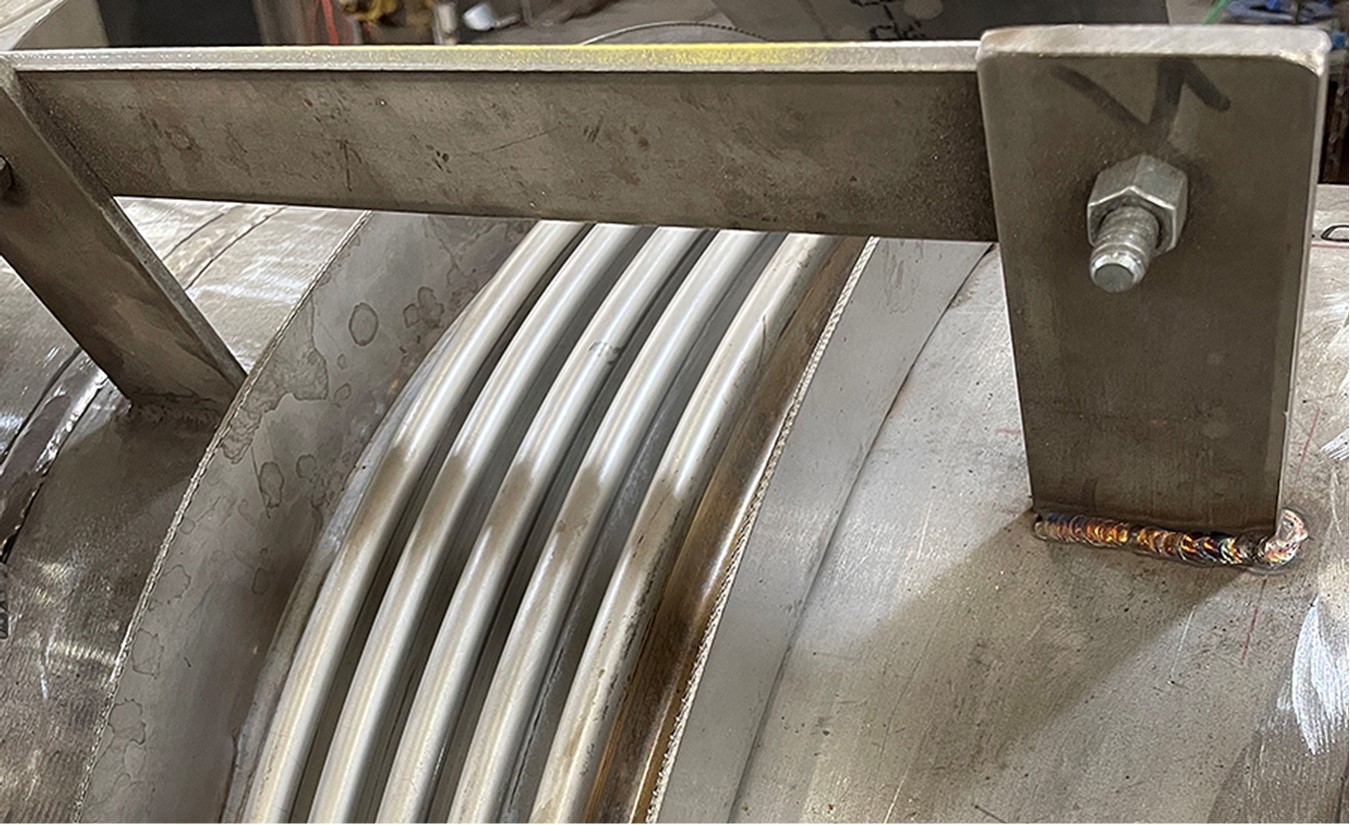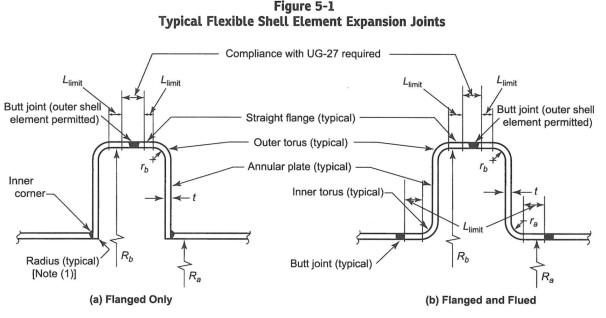 In order to exchange heat, a heat exchanger always has a hot side and a cold side. The hotter fluid can be on either the shell or tube side, but the two sides are always at different temperatures. The temperature difference between the shell and tube materials causes them to expand and contract relative to each other. This thermal movement, known as differential thermal expansion, creates stress in any fixed-tubesheet heat exchanger. As part of the ASME code calculations, the shell, tubesheets, and tubes all must be checked to make sure they can handle these thermal stresses. If the stress becomes too high for any component, a designer can add an expansion joint to the shell. This joint adds flexibility to the shell and reduces the thermal stresses. Expansion joints are crucial in maintaining the integrity and longevity of the heat exchanger by accommodating large thermal differences. Next month, we will explore common types of expansion joints.
In order to exchange heat, a heat exchanger always has a hot side and a cold side. The hotter fluid can be on either the shell or tube side, but the two sides are always at different temperatures. The temperature difference between the shell and tube materials causes them to expand and contract relative to each other. This thermal movement, known as differential thermal expansion, creates stress in any fixed-tubesheet heat exchanger. As part of the ASME code calculations, the shell, tubesheets, and tubes all must be checked to make sure they can handle these thermal stresses. If the stress becomes too high for any component, a designer can add an expansion joint to the shell. This joint adds flexibility to the shell and reduces the thermal stresses. Expansion joints are crucial in maintaining the integrity and longevity of the heat exchanger by accommodating large thermal differences. Next month, we will explore common types of expansion joints.








